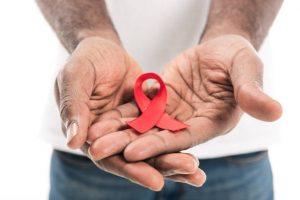Cases of rash, myalgia and fever have been reported over the past 2 months mostly from residents of Johannesburg, Gauteng Province. Typically a sick person reported mild-to-moderate headache and myalgia lasting 1-2 days, followed by the onset of a rash initially on the trunk and progressing over 1-2 days to the limbs, palms and soles. The rash eventually resolved after 3-5 days, but a few patients experienced arthralgias of the large joints, and one patient developed joint effusions. The illness was self – limiting, but the florid nature of the rash has prompted many persons to seek health care. The NICD has conducted several laboratory tests on over 40 persons, and has confirmed infection with Sindbis in the Johannesburg cases and West Nile virus in a patient from a farm in the Northern Cape province.
The rash associated with these Sindbis fever cases have included punctate papules on the trunk and limbs, palms and soles, some with small vesicles on the papules and some with characteristic halos around the papules and some with slightly tender generalized lymphadenopathy. The rash associated with the West Nile fever case was more diffuse with a macular/ papular appearance.
Sindbis and West Nile virus infections are well documented in South Africa in the summer months especially in years with good rainfall but the clinical illness is not always recognized and is variously diagnosed as coxsackie infections and other viral exanthems. These two viruses co-circulate as they share a common vector- culicine mosquitoes – and avian hosts. Outbreaks of Sindbis and West Nile fevers have been reported simultaneously on the Highveld of South Africa in 1974, 1984 and in 2004. Infections with Sindbis and West Nile viruses should not be confused with tick bite fever, which is also common during the summer season? at this time of the year. While there is some overlap in the dermatological manifestations typically tick bite fever patients have severe headache and high fever.
The diagnosis of tick bite fever is typically a clinical one and the finding of an eschar in persons with acute febrile illness must prompt treatment with doxycycline. PCR of eschar swabs during the acute phase and serology only after ten days of illness may serve to confirm the diagnosis of tick bite fever. However diagnostic uncertainty should not delay treatment with doxycycline. Malaria is important to consider during the period September to May in all persons with acute febrile illness returning from malaria transmission areas in southern Africa.




